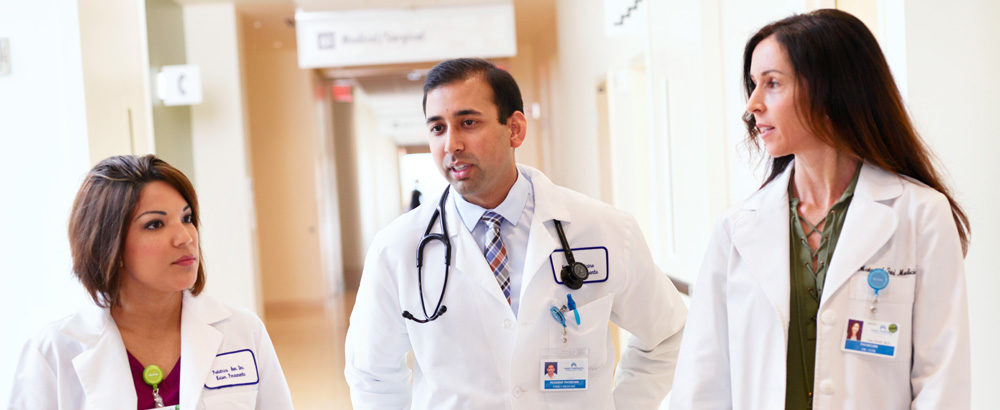Every year, 600,000 hysterectomies are performed in the United States, making this procedure the second most common surgery undergone by women after a cesarean section. A minimally invasive version of this procedure, which provides a shorter and easier recovery, is now available — and MAPMG is at the forefront of this trend. Today, MAPMG boasts minimally invasive hysterectomy rates far above national averages.
Minimally invasive surgery for hysterectomy — removing all or part of a woman’s uterus through laparoscopic techniques or through the vagina — should be the standard of care, according to The American Association of Gynecologic Laparoscopists and the American Congress of Obstetricians and Gynecologists. These may be done as an outpatient procedure, allowing women to return home, typically within four hours, with significantly reduced post-operative complications and recovery times. In contrast, an open procedure usually comes with a two- to three-day hospital stay and a longer, four-to-six-week recovery.
With an open procedure, surgeons create a large incision to remove the uterus, compared to a few small cuts necessary to insert laparoscopic instruments for what is referred to as minimally invasive gynecology surgery techniques.
 Despite the benefits of these procedures, more than 50 percent of percent of hysterectomies for benign issues are still performed via open procedures (2015, Journal of the Society of Laparoendoscopic Surgeons). The trend toward minimally invasive hysterectomies is on the rise. “More and more women are demanding these procedures,” says E.W. Emanuel, MD, MAPMG Associate Medical Director for Women’s and Infants’ Health.
Despite the benefits of these procedures, more than 50 percent of percent of hysterectomies for benign issues are still performed via open procedures (2015, Journal of the Society of Laparoendoscopic Surgeons). The trend toward minimally invasive hysterectomies is on the rise. “More and more women are demanding these procedures,” says E.W. Emanuel, MD, MAPMG Associate Medical Director for Women’s and Infants’ Health.
“At Kaiser Permanente, we do the right thing for the right reasons,” he explains. “We knew that open cases cause our patients more pain and a longer recovery. Minimally invasive surgical procedures will offer higher patient satisfaction and reduce our patients’ scarring, bleeding and need for more pain medication.”
With collaboration, hard work, and strategic planning, MAPMG Ob-Gyns and Kaiser Permanente nurses and staff have been in front of the national push for minimally invasive hysterectomies. Last year, 88 percent of the total 643 hysterectomies performed by MAPMG were done using minimally invasive gynecology surgery.
Within these impressive figures is another important trend: performing minimally invasive hysterectomies at an ambulatory surgery center (ASC) or outpatient center vs. a hospital. In 2017, our Ob-Gyn physicians and surgical teams performed 154 minimally invasive hysterectomies at Kaiser Permanente ASCs throughout the region. That’s up from the 2016 total for MAPMG of 103 — a leap made possible by the talent and dedication of our Ob-Gyn physicians and surgical teams and a shared mission of ensuring the best possible patient outcome and experience.
“Because the ASC support staff are experts in outpatient surgery, the surgery experience from start to finish is better for our patients,” explains Mark Tretiak, MD, of the NOVA team, which reached its 100th minimally invasive hysterectomy at the Tyson Corner Medical Center almost a year ago and expects to reach the 200 mark this fall.
The NOVA team has worked hard to improve quality and patient outcomes, as have its counterparts in the Baltimore and District of Columbia Suburban Maryland service areas. Patients are selected for ASC care based on health and anatomy, and those not a candidate for an ASC have their procedure at a premier hospital partner’s facility by one of our Ob-Gyn surgical teams. Dr. Emanuel proudly points out that not one minimally invasive surgery is out-sourced, thanks to the expertise and training of the MAPMG physicians and surgical teams. Dr. Tretiak adds, “We act as team and refer patients to one another. It is a real testament to our doctors’ commitment to the quality of care we provide to our patients.”




